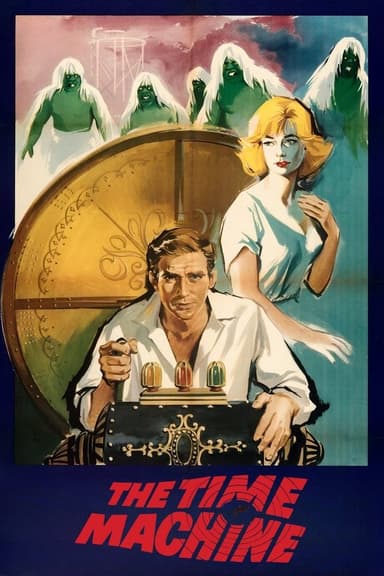
The Time Machine
2002 • Action, Adventure, Science Fiction • PG-13
Hoping to alter the events of the past, a 19th century inventor instead travels 800,000 years into the future, where he finds mankind divided into two warring races.
Runtime: 1h 36m
Why you should read the novel
H.G. Wells' original novel, The Time Machine, is a profound exploration of time, society, and the nature of humanity. By reading the book, you’ll experience Wells’ intricate world-building, vivid imagery, and philosophical contemplation that are only touched upon in the film. The novel invites readers to contemplate fate, evolution, and class, challenging you to ponder the implications of time travel and the far future in ways the movie cannot capture.
The book's prose immerses you in rich, thought-provoking narrative, allowing you to imagine the marvels and terrors of the distant future at your own pace. You get direct access to Wells’ pioneering science fiction voice, brimming with curiosity and critical commentary. Each page invites deeper reflection on civilization, technology, and the human condition.
Choosing the novel over the movie means engaging with the timeless ideas that inspired generations of science fiction writers and filmmakers. You’ll uncover layers of meaning, symbolism, and social critique that broaden your appreciation for the story and its lasting significance in literature.
Adaptation differences
One of the most significant differences between the 2002 film and the book is the motivation for time travel. In Wells’ novel, the Time Traveller is driven by scientific curiosity and philosophical inquiry, seeking to understand the future of humanity. The film, however, provides a personal motivation: Alexander Hartdegen’s desire to save his murdered fiancée, making the journey emotionally charged and personal rather than intellectual.
The depiction of the Eloi and Morlocks also shifts in the adaptation. Wells’ Eloi are frail, almost childlike beings—symbols of a decayed upper class—while the Morlocks are bestial, subterranean laborers. The movie’s Eloi are more robust and culturally diverse, even giving them a language and identity, while the Morlocks, especially the Über-Morlock character, gain added villainy and intelligence for dramatic effect.
Additionally, the film adds entire plotlines and characters not present in the novel. For instance, the character of Mara, the love interest among the Eloi, and the Über-Morlock leader provide cinematic stakes and action sequences absent from the original. Wells’ book is more focused on social commentary, atmosphere, and speculative exploration than on personal drama or action.
Finally, the ending is notably different. Wells’ novel concludes with ambiguity and philosophical rumination as the Time Traveller ventures off once more into the future, his fate unknown. The film wraps up with a confrontation and resolution, with Alexander remaining in the distant future to help the Eloi build a better society. This shift from open-ended speculation to a resolved storyline fundamentally changes the story’s message.
The Time Machine inspired from
The Time Machine
by H. G. Wells








